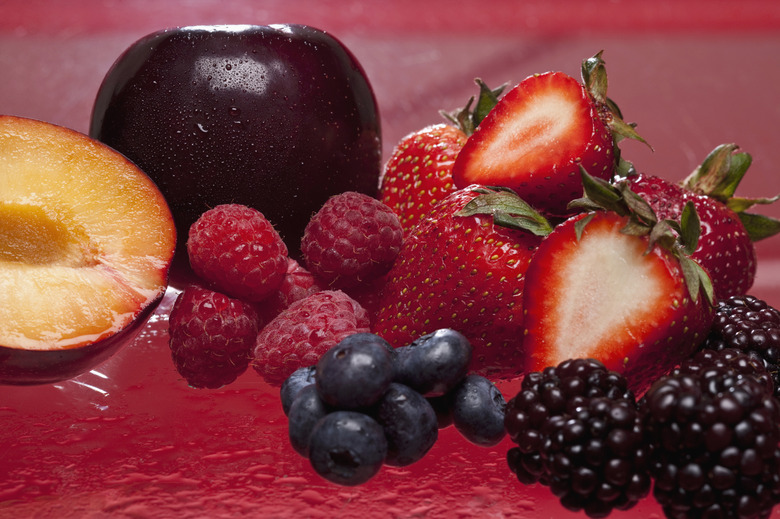How To Make Ethylene Gas
Ethylene gas is a natural gaseous plant hormone that helps to speed up the ripening process; it is utilized in a variety of other processes associated with plant life. Ethylene is also responsible for leaf abscission, aging and can act as a growth inhibitor. Ethylene is the only gaseous plant hormone and thus serves an important role in the life cycle of a plant. Making ethylene gas is fairly simple; you can document the process by comparing the rate of ethylene production amongst different kinds of fruits and vegetables.
Step 1
Wash all of your fruits and vegetables and pat them dry using a paper towel. Washing your fruits helps ensure your fruit is free from any chemicals or agents that may be aiding in the ripening.
Step 2
Open one plastic bag and place the two bananas in the bag. Seal the bag tightly and make sure that there is little air in the bag. You want to ensure that the bag is not free from all air as the oxygen will help the fruit to produce ethylene more effectively. Write the date and time on the bag so you know when you began your experiment, and label this bag "A."
Step 3
Take a picture of the bag clearly displaying the time and date written on the bag. Make sure to save the pictures on your camera or upload them to a program where you can keep track of the photographs relatively easily. Label this photograph "Banana Day One."
Step 4
Place the avocados in another plastic bag and follow the same procedure as in Step 2; allowing most but not all of the air to escape the bag allowing the fruit to breathe. Label this bag "B" and also indicate the date and time the fruit was placed in the bag.
Step 5
Follow the same photograph logging procedure you did for the bananas except write "Avocado day One."
Step 6
Proceed with Steps 2 and 3 using the peaches; photographing and labeling the peaches and indicating the date and time as you did with the other fruits. By following this procedure you are creating an accurate and time verifiable log of the ethylene production of your fruits.
Step 7
Check on the bags of fruit every 12 to 14 hours. Looking for signs of ripening or decay, you can begin to see the rate of ethylene production with the fruits. Photograph the bags every 12 hours and with each photograph mark the time and date of each photographed progression. At the end of the experiment you will have concrete evidence of the creation of ethylene gas and also will be able to note which fruits created the gas more rapidly in comparison to the others.
Things Needed
- 2 Plastic sealable bags
- 2 Bananas
- 1 Avocado
- 2 Peaches
- Digital camera
TL;DR (Too Long; Didn't Read)
Utilizing peaches and bananas will be faster than harder skinned fruits and vegetables as softer skins tend to release the gas quicker due to a softer membrane.
Putting all of the fruits and vegetables together will speed the process if you don't care about comparing the rate of production.
Warning
Do not leave the fruit in the bag past when it begins to rot or else it will begin to smell foul.
Cite This Article
MLA
Mosley, Sterlin. "How To Make Ethylene Gas" sciencing.com, https://www.sciencing.com/make-ethylene-gas-8721398/. 24 April 2017.
APA
Mosley, Sterlin. (2017, April 24). How To Make Ethylene Gas. sciencing.com. Retrieved from https://www.sciencing.com/make-ethylene-gas-8721398/
Chicago
Mosley, Sterlin. How To Make Ethylene Gas last modified March 24, 2022. https://www.sciencing.com/make-ethylene-gas-8721398/
